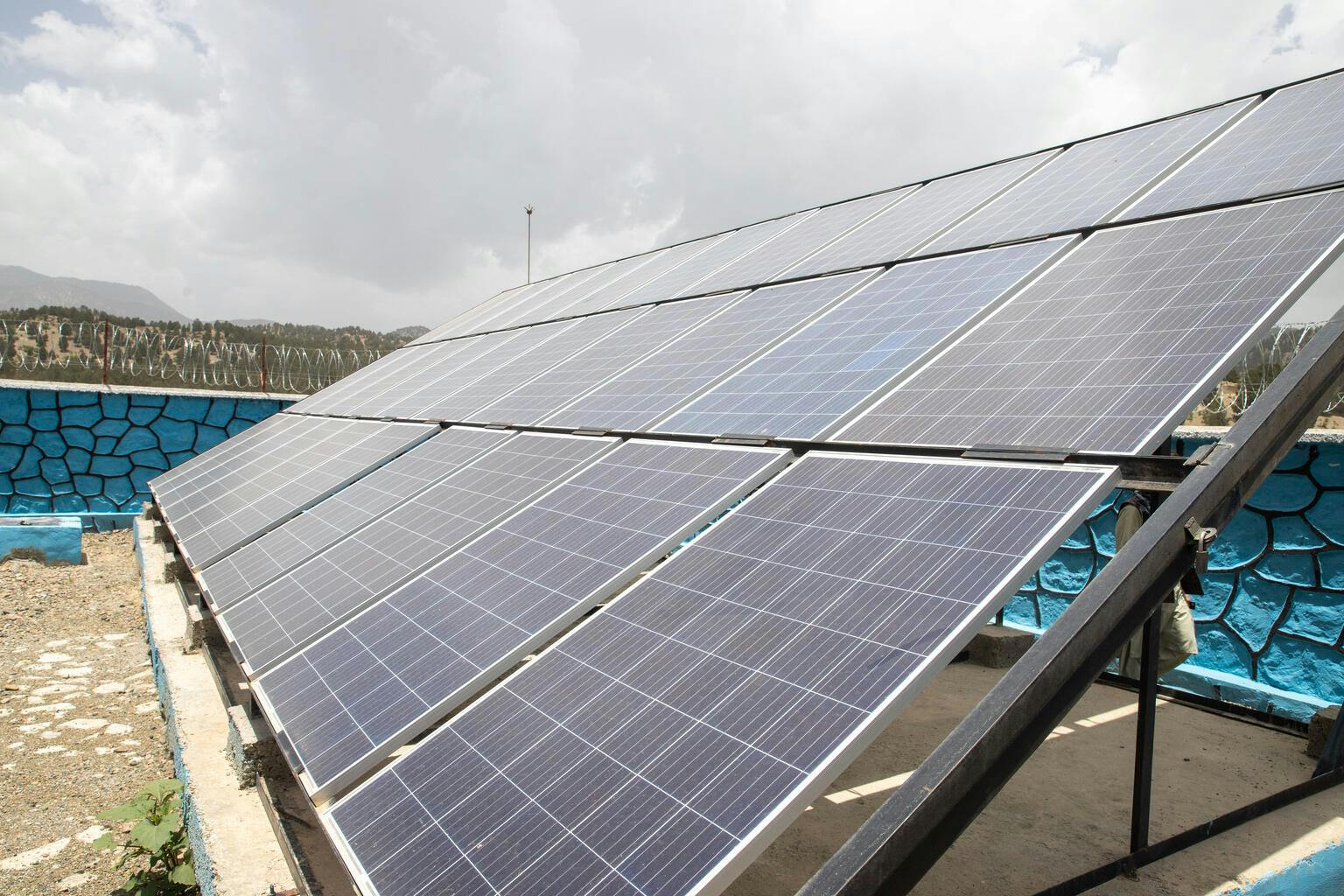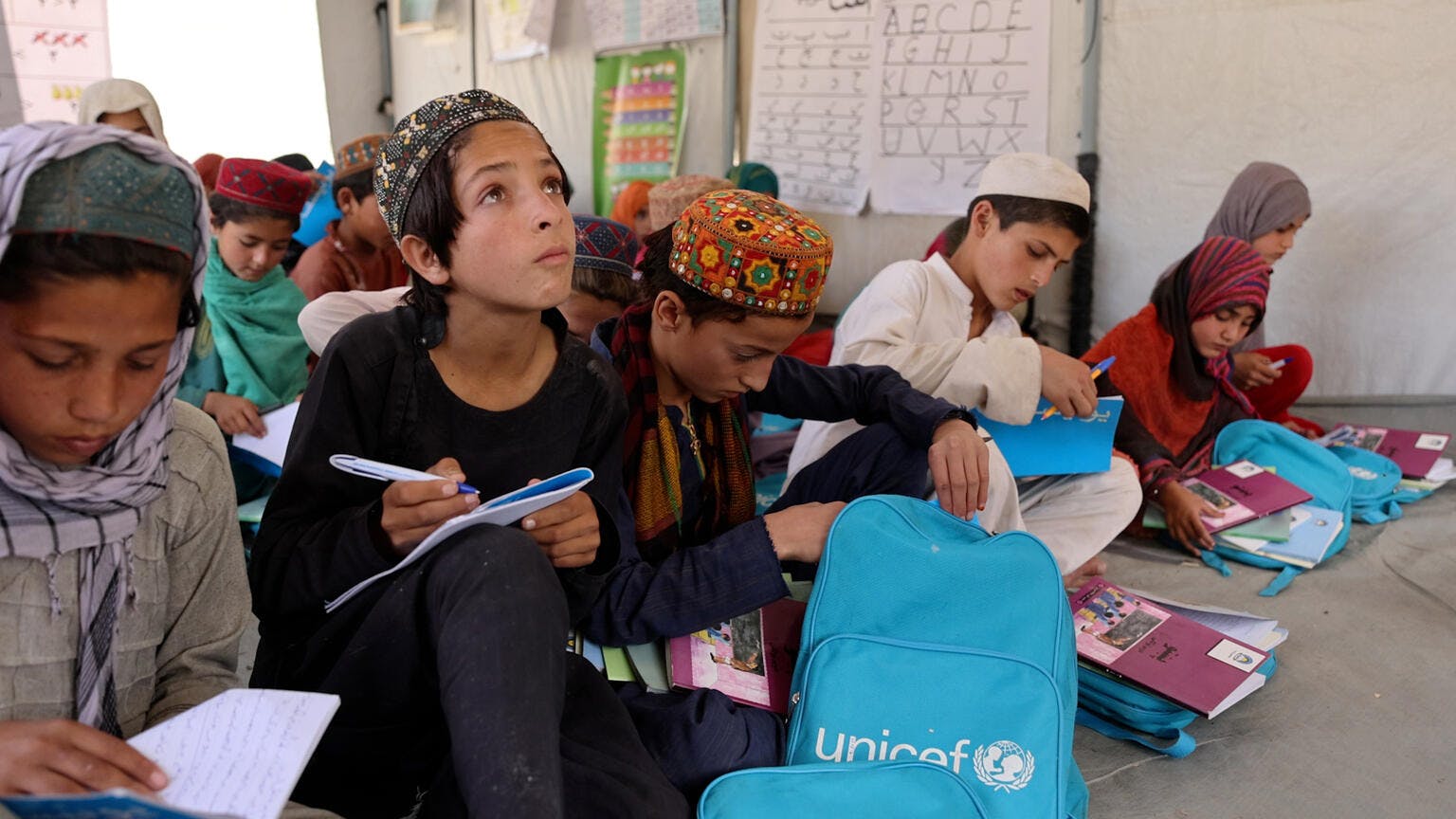
Building back better after emergency strikes
Home
Stories
Building back better after emergency strikes
A year after a devastating earthquake in Afghanistan, UNICEF continues to deliver long-term solutions.
What does emergency response look like? There’s the obvious: delivering emergency supplies, ensuring access to clean drinking water, and providing essential health services. But what about when weeks, months, or even years have gone by since the initial need?
We reckon that emergency response isn’t just about helping communities return to their everyday normal – it’s also about helping communities become more resilient, self-sustainable, and better prepared for when other emergencies strike.
A year on since parts of Afghanistan were hit by a devastating earthquake, UNICEF is still on the ground providing humanitarian support for affected kids and communities.
In the immediate aftermath, water was trucked into affected communities so that over 25,000 people could receive safe drinking water. But this method of accessing clean water can’t be sustained long-term, so UNICEF built 12 solar-powered, climate-friendly systems to provide communities with clean and safe water to use for drinking, cooking, cleaning and more – even long after UNICEF leaves.

UNI398379
Solar panels power a community water system in Kani Noorbakhil Village, Afghanistan. This water system sends water to a nearby reservoir, piping water directly to 165 family homes in the area.

UNI398362

Sima Gul pours a glass of water from her family's new water tap. For the first time, she has clean, drinkable water right near her home.
UNICEF has also improved the overall hygiene and sanitation of the earthquake-affected communities by building and rehabilitating toilets, and by providing soap and handwashing stations for households.
“One year ago, I couldn’t read or write.”
Tucked between hills, hours away from paved roads, Mir Sapar village is one of the most remote in the Khost Province. After the earthquake shook those hills, UNICEF established new community-based classes for 6,500 children who had never been to school before.

UNI401554
In the remote Mir Sapar village, children walk to their community-based education classes.
9-year-old Kefayat used to spend his days in the mountains, sometimes wandering aimlessly, sometimes herding goats and picking up sticks for firewood.
Now, Kefayat loves to learn - never shy to raise his hand in class.
Kefayat sits ready for his lessons in his community education class in Khost Province, Afghanistan.
“I was given bags and books,” he shares. “One year ago, I couldn’t read or write. Then UNICEF started this class, and in the last year I have made good progress.”

UNI401555
It’s not just been the earthquake-affected regions which have had new learning environments set up. All over Afghanistan, UNICEF has been building and rehabilitating schools, training new teachers, and providing teaching and learning materials for students – with an emphasis on supporting young high-school aged girls who’ve been banned from attending school.

UN0838329
13-year old Zeinab is able to safely have a quality education in her own community thanks to UNICEF-supported classrooms.
In 2022, over 550,000 kids were supported with education opportunities. And with more access to education, this means brighter futures for kids and their communities.
Our goal is to be there for kids before, during, and after the 300+ emergencies we respond to each year. So this means being prepared ahead of time, the immediate response, and helping to build back for as long as it’s needed. By taking a holistic approach and finding long-lasting solutions, we ensure that kids and communities can enjoy a happy, healthy tomorrow.